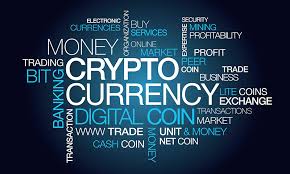Venezuela Has a Dubious Plan to Fight Hyperinflation and It Involves Its Cryptocurrency, the Petro

Venezuela is tackling hyperinflation by lopping five zeroes from the value of the bolivar, creating a new currency, the Sovereign Bolivar, that will be anchored to its cryptocurrency, the Petro. President Nicolas Maduro announced the implementation date yesterday as August 20, saying the country needs an “economic revolution.”
And it sorely does. Venezuela has been suffering under hyperinflation since Maduro took office in 2013, which coincided with falling oil prices and large macroeconomic imbalances that led to economic crisis. From his point of view, the country is the victim of an “economic war” waged by the U.S. Maduro was re-elected for another six years in May in an election the United Nations and the European Union called fraudulent.
The International Monetary Fund said the rate of inflation of the bolivar is set to hit 1,000,000% this year as Venezuela’s gross domestic product is expected to fall by 18%. “The situation in Venezuela is similar to that in Germany in 1923 or Zimbabwe in the late 2000’s,” the IMF wrote in its report.
The redenomination of the bolivar was met with skepticism. Venezuelan economist Asdrubal R. Oliveros tweeted: “The Sovereign Bolivar is anchored to Petro. A fantasy. The backing of a coin is trust. Precisely because no one trusts the bolivar is why hyperinflation was unleashed.”
Statistics professor Félix Seijas R. tweeted, “Let’s not lose sight of the following: 1 Sovereign Bolivar would amount to 100 million of the bolivars at the time Chavez came to power. And no, it’s not a matter of Maduro: Chavez was responsible for three of those zeros in his life, and now through Maduro, another five. The legacy.”
Profesor Luis Vicente Leon tweeted “The Petro is a currency without a relevant circulation, without confidence from the market and banned in large economies. Tying the new Bolivar to Petro is tying it to nothing.”
Economic analyst Henkel Garcia tweeted: “I fear that all this will complicate the cash crisis even more, something that seemed difficult with the already very low monetary cash ratio.”
Back in February, Maduro said 100 million Petros, pre-mined by the Venezuelan government, would be sold at a value of more than $ 6 billion. U.S. Treasury warned citizens not to buy it. The value of a Petro, supposedly backed by oil and mineral reserves, has dropped from its initial sale price of $ 60, with one cryptocurrency reporting a price of $ 16.70. Maduro did not offer details in his press conference yesterday about how the Petro would support the Sovereign Bolivar.
On the black market in Venezuela, one U.S. dollar will fetch you about 3.5 million bolivars, the New York Times said. To survive amid public service outages and food shortages, with monthly wages equaling about one U.S. dollar, residents are increasingly turning to bartering. Hundreds of thousands of Venezuelans have fled into neighboring countries.
Zimbabwe’s dollar went through four rounds of redenomination, with the country eventually printing a $ 100 trillion bill before scrapping the currency altogether. Economist Daniel Lansberg-Rodriguez of Northwestern University told the New York Times Venezuela might be less successful in fixing its currency issues than Zimbabwe was. “The level of chaos in Venezuela makes it that much more difficult to restore confidence and break out of this cycle,” he said.

